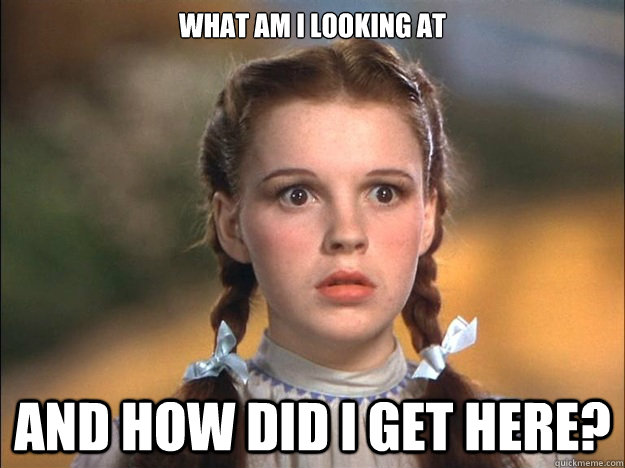This post originally appeared at Spellbound Scribes.

No pictures???
As I once more begin the arduous process of drafting a new manuscript, I’ve been giving a lot of thought to the mechanics and architecture of story-telling. Of course there’s no right way to tell a story, but there are certain elements that must be in place for a story to be effective. And–if we’re starting at the beginning–the first thing we have to think about is, well, the beginning.
It’s no secret in the publishing industry that the beginning of a manuscript is of the utmost importance. To agents, to editors, and to potential readers alike. The first 250 words…the first page…the first chapter. The opening of a book is what introduces your work to your reader, and, if all goes well, draws them in and makes them keep reading. But what exactly is supposed to be going on in this crucial stage, and how do we as writers make that happen? While there’s no perfect way to do it, here are some of the things I think are absolutely necessary to nailing the perfect first page.
1. Start with action. Okay, this needs a little clarification. By action I don’t necessarily mean a sword fight or a horse race. By action, I mean something needs to be in the process of happening. The fancy literary term is in media res, or in the middle of things. Something is being revealed. Something is going terribly wrong. Someone is in trouble. There must be a sense that something is happening, and will continue to happen.
Another way of putting this: don’t lead with extensive backstory or a detailed explanation of who and where and why. These things are important, but a paragraph of exposition on your first page may just kill your reader’s desire to continue past that first page. Lead with action; the rest will follow.

Who? Get it?
2. Introduce your main character. Have you ever read a book that began with something happening to someone, and then it turned out that character was not, in fact, the protagonist of the story? I have, and I always feel a little cheated. Your readers are going to assume that the first person they meet is your main character. So let them meet him or her. And remember, first impressions matter.
Meeting your protagonist is the first point of connection for your reader. Whatever assumptions they make right off the bat might just stick with that throughout the story. So make that first impression count, and give them a sense of who your character is and what motivates them.
3. Show us your world. When they open that first page, readers are latching onto any and every detail that will give them a sense of setting and place. What do the characters look like? What are the surroundings? How is it similar to what the reader is familiar with, and how is it different? Without details to bring the scene into focus, the reader might feel a little lost, as though the action is happening in a vacuum.
The challenge here is painting a picture…without going overboard with descriptions. Just like explanation and backstory, too much description on the first page may bore and alienate your reader. Give your reader a sense of place without resorting to a paint-by-number.
4. Give us a hint of voice. Your potential reader needs to know what makes your story different from all the others out there, and why they should read yours. That means that the style and voice that makes you unique and sets your book apart from others needs to be immediately apparent. Is your POV character always making cracks regardless of the situation? Do you rely on muscular active prose? Whatever makes you stand out, include it in the first page. Let your hard-won craft shine!
Sound hard? IT IS. Welcome to the big leagues! While there’s no perfect way to open a manuscript, keeping these points in mind will help you begin your amazing story in a way that will have readers clamoring for more!
What do you like to include on your first page? What do you like to see on other writer’s first pages? Leave your thoughts below!

0 Comments